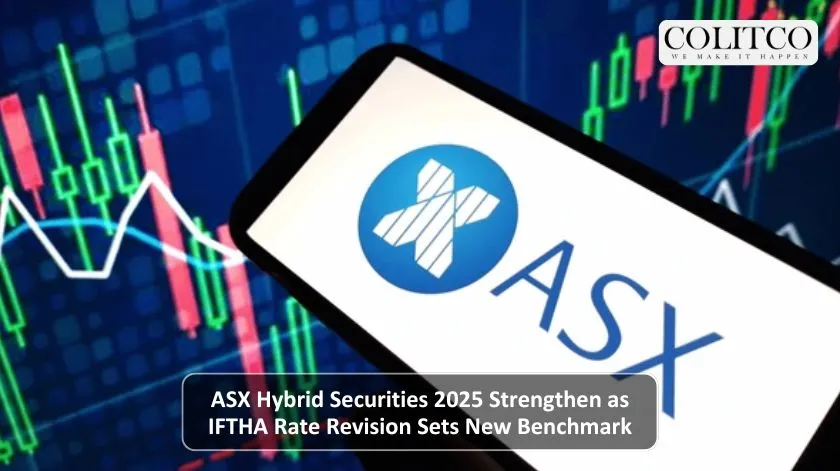Infratil Limited (IFT) has disclosed that the interest on its bonds named “IFTHA” has been set to 3.90% per year, starting from 14 November 2025. The change will be recorded in the trading systems at the market opening on 17 November 2025.
Why Does This Matter for ASX Hybrid Securities 2025?
For those who keep an eye on ASX hybrid securities 2025, this interest rate reset is a significant point of reference. The interest on IFTHA indicates the hybrid securities’ interest rates currently available in the market. With the reset to 3.90%, both issuers and investors receive a benchmark for similar instruments. The margin over the reference rate is unchanged, indicating that the market has confidence in the issuer’s credit spread.

Interest rate reset provides a clear benchmark for hybrid securities investors.
How Does the Margin and Structure Reflect on Hybrid Securities’ Interest Rate?
Keeping the margin at 1.50% over the reference swap rate (as shown in previous similar resets) indicates that the issuer views its credit spread as stable. The stability of the margin implies that hybrid securities’ interest rate margins may not be significantly wider in the near future. For new issuers and investors in the ASX hybrid securities 2025 market, this will mean that expected yields may stay close to this level if credit conditions are constant.
What Are the Implications for Investors and Issuers?
From an investor viewpoint, the resetting to 3.90% connotes a base for the current hybrid securities’ coupon expectations in the current market. If the reference rates rise, then the coupon may rise proportionately while the margin still holds.
This update gives the issuers not only a clear comparability benchmark but also an opportunity to price their new hybrid securities in a way that is acceptable to the market and thereby streamlining their access to investor demand.
How Does This Update Fit Into the Broader ASX Hybrid Securities 2025 Landscape?
In the case of ASX hybrid securities 2025, the IFTHA interest rate revision is significant and cannot be ignored. The investors analysing the trends in hybrid securities interest rates can correlate the pricing of this bond with the rates of other recently issued bonds.
It indicates that the market is currently willing to accept interest rates of about 3% for bonds of well-rated issuers. This situation might lead to an increase in hybrid bonds, quite possibly in 2025, especially when issuers would be able to demonstrate their credit strength and, at the same time, maintain the margins.

IFTHA rate revision offers key insight for ASX hybrid investors.
Outlook for Hybrid Issuance and Investor Strategy
The reset to 3.90% could be regarded as a trigger for the issuance of more hybrid securities in 2025, especially since the issuers would realise that at this coupon level, there is still the availability of investor demand.
For the investors, it might be a sound strategy to adjust their portfolios to include the hybrids with the margin structures comparable to this reset, as such, they would get relatively better value than the holders of the older issues. Keeping an eye on the reference swap rates as well as the issuers’ credit rating will be of great importance as the interest rate dynamics of hybrid securities develop.
Also Read: Lendlease Reports Strong FY25 Progress as Investors Watch ASX Hybrid Securities 2025
FAQs
Q1: What are the implications of an interest rate reset for hybrid securities?
An interest rate reset causes the coupon to change at predetermined intervals based on a reference swap rate plus a fixed margin that was established at the time of issuance.
Q2: Is it possible that the IFTHA margin of 1.50% will fluctuate in future resets?
The 1.50% margin is going to be fixed for the entire term of the bond, and only the underlying reference rate will be adjusted at every reset.
Q3: Are ASX hybrid securities a riskier investment than regular corporate bonds?
The answer is yes; hybrid securities are riskier and hence yield more than corporate bonds because they are positioned lower than the senior debt in the capital structure.
Q4: What would be the best way for investors to assess ASX hybrid securities 2025 after the recent rate change?
Investors should analyze the coupon rates, strength of the issuer, stability of the margins, and the overall market to find relative value among the current hybrids that are influenced by the ongoing interest-rate trends.












